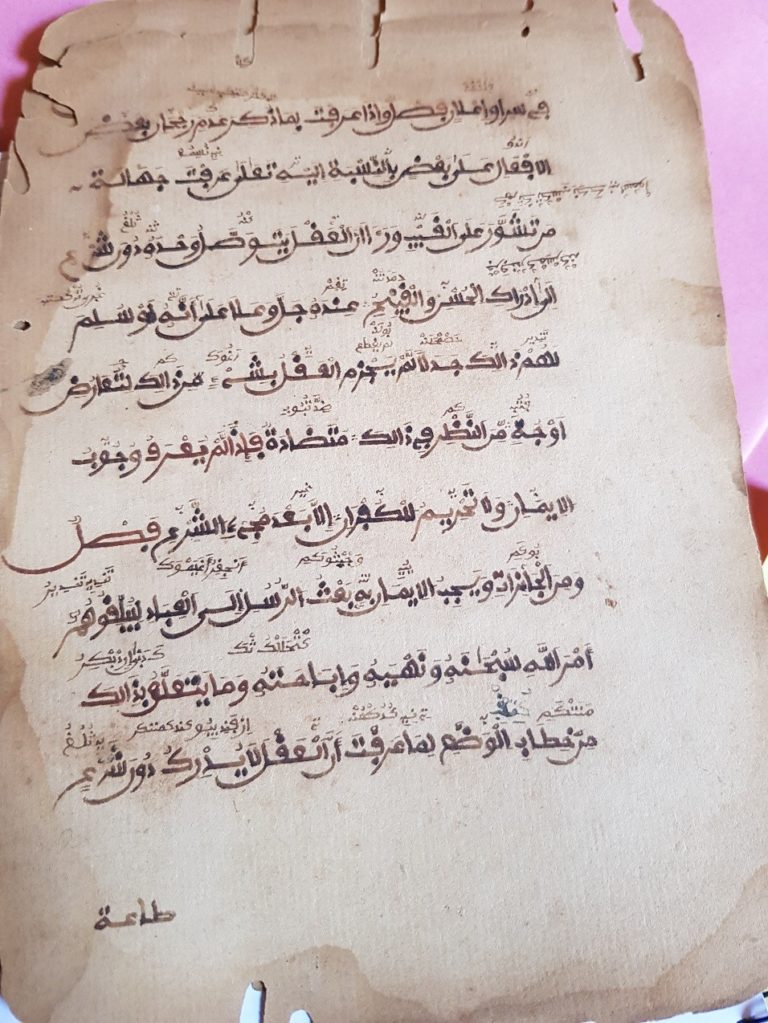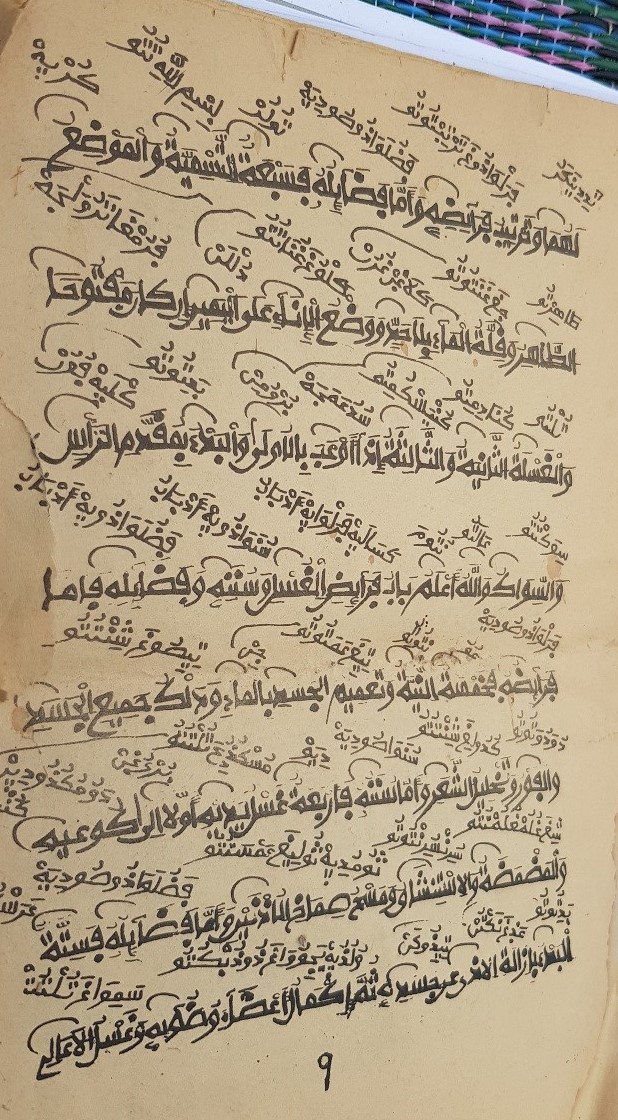Project title: Borno and Old Kanembu Manuscripts
Link to the project: https://digital.soas.ac.uk/okim/about/
The Borno and Old Kanembu project is a digital collection that provides access to one of the earliest written sub-Saharan languages in manuscript form. These manuscripts are written in Arabic script, and the corpus originated from Qur’anic manuscripts that were photographed by David Bivar in the 1950s. This collection was donated to the SOAS Library in 2003. The digital collection covers around 400 years, starting from the oldest manuscripts found by Bivar (17th to 18th centuries) up to later manuscripts produced in the late 20th century.
The Borno and Old Kanembu manuscript project has a strong connection with the three components of Drucker: materials, processing, and presentation. The project has a rich material component, which includes analogue sources such as Qur’anic manuscripts, bilingual (Arabic and Old Kanembu) manuscripts, photographs, microfilms, and fieldwork materials, all of which were digitised to create a large corpus of digital folios.
In terms of the processing component, the project made the digital materials usable through activities such as transcription and linguistic analyses to study the Old Kanembu language, as well as organising the manuscripts by geographic origin, dates, and scripts.
Finally, the digital project made the collection accessible via online platforms such as the SOAS Digital Library portal. It has become easy for users to view the images and metadata and to access the continuously updated collection. It also supports researchers in searching and exploring manuscripts that span over four centuries.
In short, the digital Borno and Old Kanembu project demonstrates all three of Drucker’s stages—Materials + Processing + Presentation—in an integrated way.

